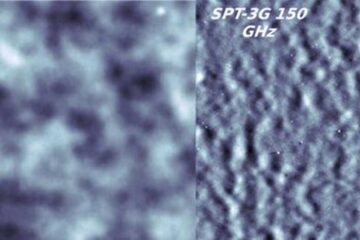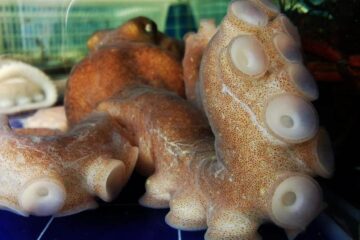Widespread Arctic warming crosses critical ecological thresholds, scientists warn

New international study suggests effects of climate change may be irreversible
Unprecedented and maybe irreversible effects of Arctic warming, linked to human intervention, have been discovered by a team of international researchers led by Queen’s University biologist John Smol and University of Alberta earth scientist Alexander Wolfe.
The researchers have found dramatic new evidence of changes in the community composition of freshwater algae, water fleas and insect larvae (the base of most aquatic food webs) in a large new study that covers five circumpolar countries extending halfway around the world and 30 degrees of latitude spanning boreal forest to high arctic tundra ecosystems.
“This is an important compilation of data that human interference is affecting ecosystems on a profound scale,” says Dr. Smol, Canada Research Chair in Environmental Change and 2004 winner of Canada’s top science award, the Gerhard Herzberg Gold Medal. “We’re crossing ecological thresholds here, as shown by changes in biota associated with climate-related phenomena like receding ice cover in lakes. Once you pass these thresholds it’s hard to go back.”
The team’s findings, in the largest study of its kind, will be published the week of February 28 in the Proceedings of the National Academy of Sciences (PNAS).
A total of 26 researchers from Canada, Finland, Norway, the UK, and Russia have produced 55 historical profiles of algal and invertebrate animal remains from the sediment in 46 Arctic lakes. Also on the team from Queen’s are biologist Kathleen Rûhland and PhD student Bronwyn Keatley. John Birks, a professor at the University of Bergen and adjunct professor at Queen’s, quantified the amount of biological change using statistical approaches.
The new study shows that climate change has lengthened summers and reduced lake ice cover across much of the Arctic. This in turn prolongs the growing season available to highly sensitive lake organisms, and opens up new habitats. The most intense population changes occurred in the northernmost study sites, where the greatest amount of warming appears to have taken place, the researchers say.
“Polar regions are expected to show the first signs of climatic warming, and are therefore considered sentinels of environmental change,” says Dr. Wolfe. “Unfortunately, long-term monitoring data are generally lacking in these areas, which makes it difficult to determine the direction and magnitude of past environmental changes.” Since lakes are ubiquitous to most Arctic environments, however, microfossils of aquatic organisms preserved in the sediment become an archive of the lake’s history, adds University of Toronto Geology Professor Marianne Douglas.
“The timing of the changes is certainly consistent with human interference, and one of the major avenues is through climate warning,” notes Queen’s biologist Dr. Kathleen Rûhland. “This is another example of how humans are directly and indirectly affecting global ecology.”
An earlier lake sediment study co-authored by Drs. Douglas and Smol, published in the journal Science in 1994, caused controversy with its interpretation of climatic warming in three high Arctic ponds. Now, says Dr. Smol, “the tide has turned, and some of the strongest skeptics of that 1994 study are co-authors on this paper.”
One area in the Canadian sub-Arctic that appears not to be warming to the same extent is in Labrador and northern Québec. Team member Reinhard Pienitz, from Université Laval, notes that this represents an important control region for the study. The fact that no patterns of biological change are evident there supports the findings from other areas where warming has been inferred. “The changes have not been primarily caused by, for example, atmospheric deposition of contaminants,” says Dr. Pienitz.
The study concludes that it may soon be impossible to find “pristine Arctic environments untouched by climate warming.” And since changes in the Arctic are considered bellwethers of what is to come further south, the researchers consider this their most urgent environmental wake-up call to date.
“If you look at one lake at a time, you still get important information, but it’s hard to make large-scale, regional assessments,” says Dr. Smol. He compares this to viewing an Impressionist painting, where looking at one small section may only reveal dots, but on stepping back you see the whole picture. “Once you compile the larger dataset of all these lakes and ponds, striking and consistent patterns become evident. Taken together, it’s a very powerful message.”
Media Contact
All latest news from the category: Ecology, The Environment and Conservation
This complex theme deals primarily with interactions between organisms and the environmental factors that impact them, but to a greater extent between individual inanimate environmental factors.
innovations-report offers informative reports and articles on topics such as climate protection, landscape conservation, ecological systems, wildlife and nature parks and ecosystem efficiency and balance.
Newest articles

Technical Trials for Easing the (Cosmological) Tension
A new study sorts through models attempting to solve one of the major challenges of contemporary cosmic science, the measurement of its expansion. Thanks to the dizzying growth of cosmic…

Peptides on Interstellar Ice
A research team led by Dr Serge Krasnokutski from the Astrophysics Laboratory at the Max Planck Institute for Astronomy at the University of Jena had already demonstrated that simple peptides…

Octopus inspires new suction mechanism for robots
A new robotic suction cup which can grasp rough, curved and heavy stone, has been developed by scientists at the University of Bristol. The team, based at Bristol Robotics Laboratory,…





















